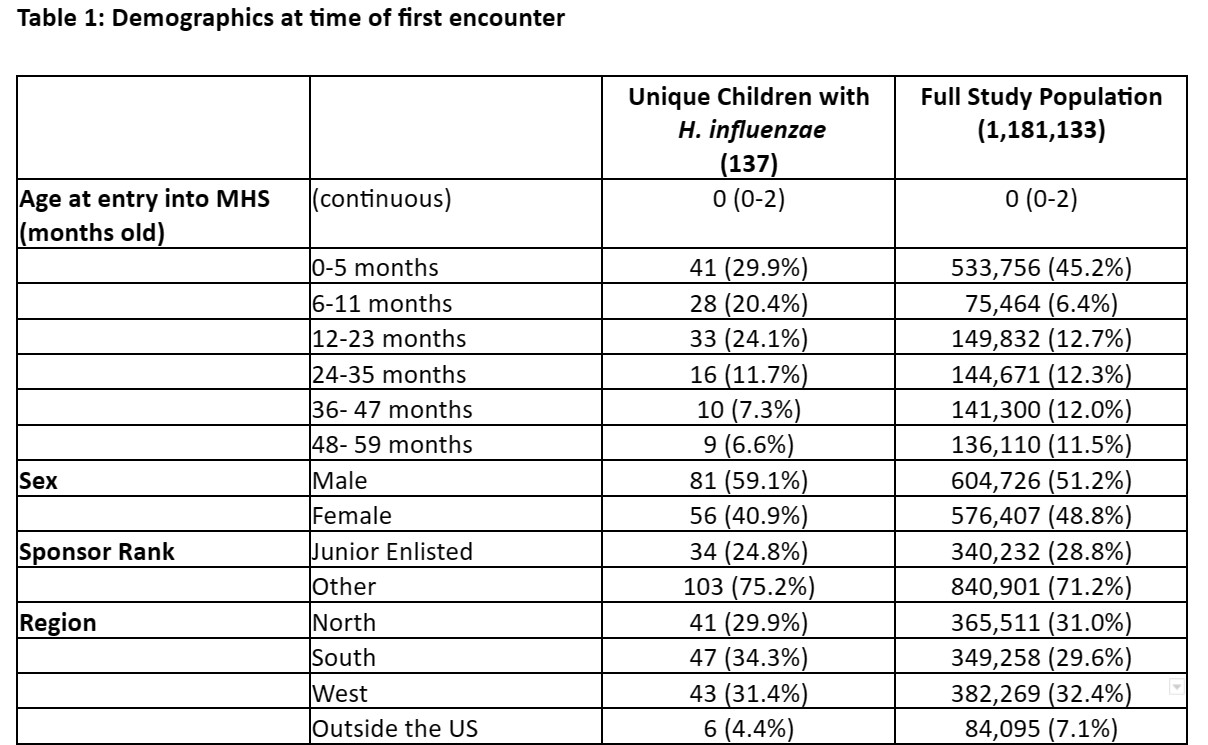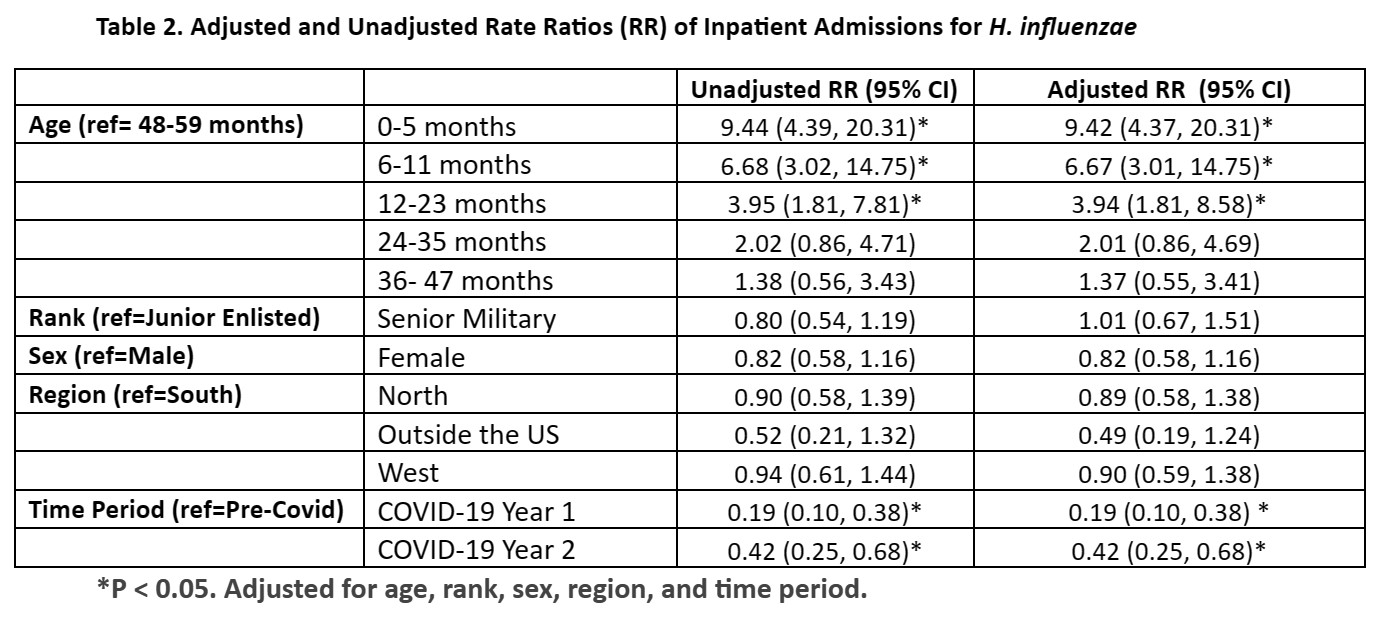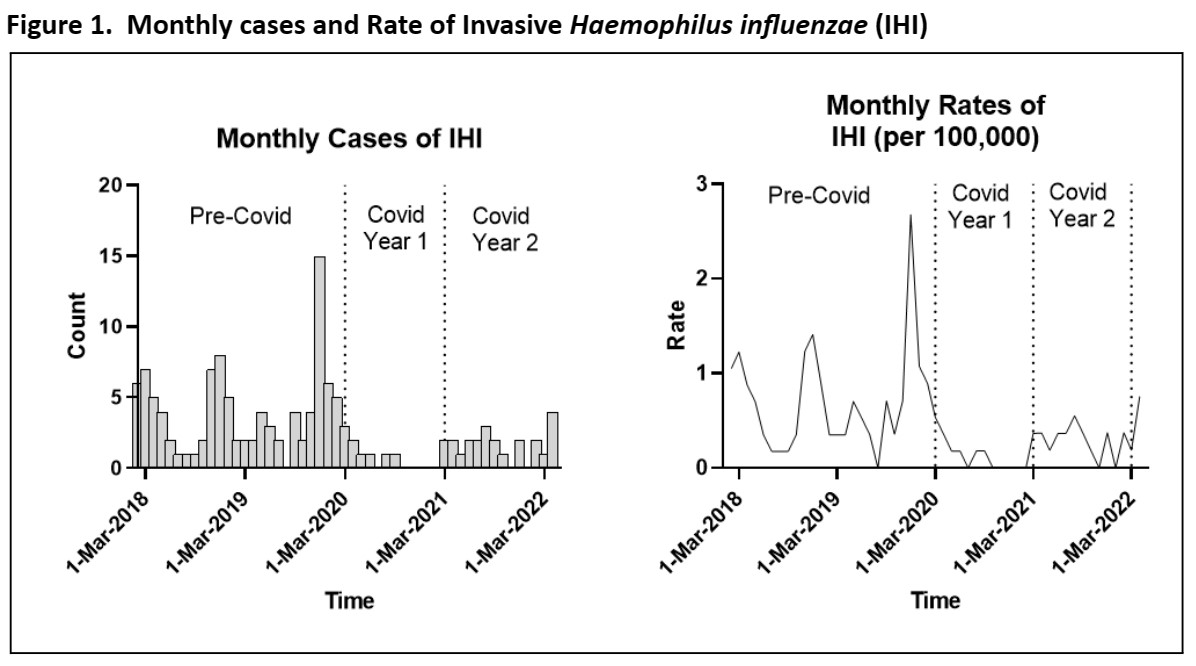Infectious Diseases
Infectious Diseases 3
413 - Rates of Invasive Haemophilus influenzae before and during the COVID-19 Pandemic within US Military Dependent Pediatric Population
Publication Number: 413.417

Monisha F. MALEK, MD (she/her/hers)
Intern/ Resident Physician
Uniformed Services University of the Health Sciences F. Edward Hebert School of Medicine/ San Antonio Uniformed Services Health Education Consortium (SAUSHEC): Pediatric Residency Program
San Antonio, Texas, United States
Presenting Author(s)
Background: Invasive Haemophilus influenzae (IHI) is a major cause of bacterial pneumonia, meningitis, and sepsis, which are leading causes of global morbidity and mortality among the pediatric population. Despite the introduction of the H. influenzae type b vaccine in 1985, IHI still remains a major cause of disease as the vaccine does not protect against non-b strains. H. influenzae is primarily transmitted via airborne droplets from infected or colonized individuals. Given the strict respiratory precautions during the COVID-19 pandemic, further evaluation on the impact on incidence rates of H. influenzae in this setting is warranted.
Objective: To investigate how COVID-19 pandemic impacted inpatient hospitalization rates for IHI in a US Military Pediatric Dependent population.
Design/Methods:
Inpatient data from the Military Health System (MHS) was used to perform a repeated cross sectional study evaluating differences in H. influenzae rates before and during the COVID-19 pandemic. Data was collected from March 2018 through February 2022, the first two years considered pre-pandemic, and the following two years divided into Year 1 and Year 2. Inclusion criteria were children 0-59 months of age within the MHS. IHI was defined using ICD-10 codes. Rates were calculated by the number of IHI in a given month divided by the number of children in the same month eligible for care. Rate ratios were calculated using unadjusted and adjusted Poisson regression adjusting for demographics and time period.
Results:
Across the cohort of 1.1 million MHS beneficiaries, there were 137 unique cases of IHI disease in children less than 5 years old. During the first year of COVID-19, there was a significant 81% decrease in cases of IHI compared to pre-pandemic level (Table 1). Even during the second year of COVID-19, rates of IHI continued to be significantly lower, 58%, than the pre-pandemic era. For age, significant adjusted rate ratios were found in patients 0-5, 6-11, and 12-23 months, but not in 24-35 and 36-47 months old compared to 48-59 months of age. Child's gender, military sponsor’s rank, and region of enrollment did not affect the rate of IHI (Table 1, 2).
Conclusion(s): There was a significant decrease in IHI seen in the first two years of the COVID 19 pandemic. This data supports that through containment measures such as implementation of masks, social distancing, quarantining, and school closures, there was a likely subsequent reduction of colonization, respiratory transmission, and the incidence of invasive disease caused by H. influenzae.


